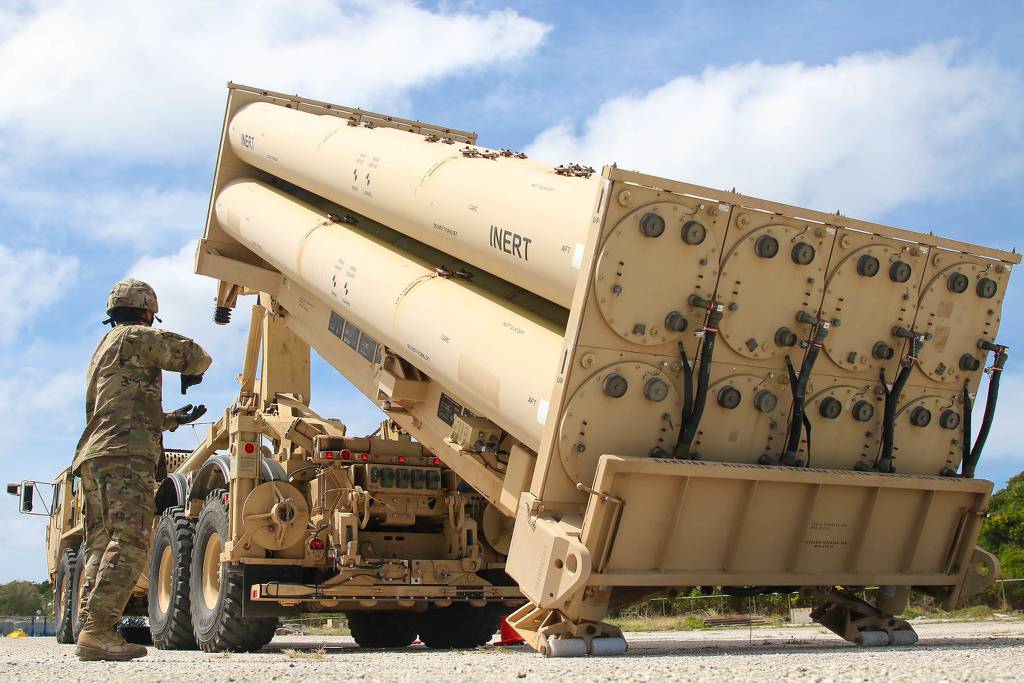
For the first time in three years, the Missile Defense Agency is asking for less money in the upcoming fiscal year, requesting $10.4 billion for 2025, which is about $500 million less than the total leaders said they needed last March.
The agency, for the first time in roughly 20 years, did not provide a public briefing on its budget request at the Pentagon. A budget summary provided by the Defense Department March 11 lacked a breakdown of how much the agency is asking for research and development, procurement, operations and maintenance and military construction.
However, for the next fiscal year, the agency said its most significant investments are focused on homeland defense and protecting the strategically important island of Guam from air and missile defense threats in the Pacific.
Here’s how the proposed spending compares to budgets past:
♦ MDA is requesting $2.7 billion to advance its Next Generation Interceptor development effort as well as upgrade and replace Ground-based Midcourse Defense system components and infrastructure, improve fire control and kill vehicle software and buy long lead items for the Phased Array In-Flight Communication System Data Terminal retrofits. The agency did not lay out specifically how much of the funding would go toward NGI development or GMD system improvements.
Two teams — Lockheed Martin and Aerojet Rocketdyne as well as Northrop Grumman and Raytheon — are competing to develop NGI, which will replace the current ground-based interceptors in the GMD system, which is designed to protect the United States from intercontinental ballistic missiles from North Korea and Iran.
A year ago, the agency asked for a total of $3.2 billion for the effort, which included $2.1 billion for NGI, $903.6 million for GMD upgrades and operations and another $41.8 million in testing and $174.8 million in maintenance.
♦ MDA wants to spend $1.2 billion on the defense of Guam in FY25, more than twice what the agency asked for in FY24. Funding would go toward developing and buying Aegis systems tailored for ground-based sites on the island and Vertical Launch Systems. Some of the money would also support a complete environmental impact study and construction on a Command Center Complex, a Transportable Array Unit Complex and a launcher field complex, the document lists.
♦ The agency is asking for $1.2 billion to buy 12 SM-3 Block IIA missiles and SM-3 Block IB spares but will not buy any additional SM-3 Block 1B missiles. Software capability development will continue to upgrade the ability for Aegis ships to take on the new AN/SPY-6 radar, designed to better track more advanced threats.
♦ The Terminal High Altitude Area Defense system, an anti-ballistic missile defense system, would get a small boost in MDA’s budget in FY25 compared to a year ago. The agency is asking for $732 million to continue developing interceptor capability and weapon system performance against more advanced threats, to buy 12 THAAD interceptors and to start engineering to integrate THAAD into the Army’s Integrated Air and Missile Defense Battle Command System architecture.
The agency asked for $574 million for THAAD including buying 11 interceptors in FY24.
♦ Funding for development of the Glide Phase Interceptor dropped by $27 million to $182 million in FY25. MDA requested $209 million last year. The interceptor, which would defend against hypersonic missiles farther away from intended targets, is in a competitive preliminary design phase.
♦ MDA continues to request funding for its Hypersonic and Ballistic Tracking Space Sensor and the Space-based Kill Assessment. The agency wants $120 million to continue the HBTSS on-orbit demonstration, which is designed to track and target hypersonic threats. The HBTSS launched into space on Feb. 14.
♦ The agency wants to buy an additional AN/TPY-2 radar and sustain its other 12 radar systems to “improve discrimination capabilities.” The radars are positioned around the globe to help track ballistic missile threats. MDA is asking for $587 million in FY25.
As the agency looks to transfer the Long Range Discrimination Radar to the U.S. Space Force, it is asking for $105 million, which would also include software development to improve discrimination capabilities.
♦ The Command and Control, Battle Management and Communications system, which provides the C2 for MDA’s global missile defense architecture, would get $517 million in FY25 to expand its ability to track hypersonic threats and tie into space sensors with views of advanced threats. The system would also support tying into the LRDR, according to the summary.
The agency is also budgeting nearly a billion dollars to fund threat representative targets and major tests including an experimental test of the initial defense of Guam architecture, Aegis Sea-Based Terminal test firing of an SM-6 against a hypersonic glide vehicle and an intercept test of the SM-3 Block IIA missile against a medium-range ballistic missile with exo-atmospheric countermeasures, the summary details.
Author: Jen Judson
Source: DefenseNews



